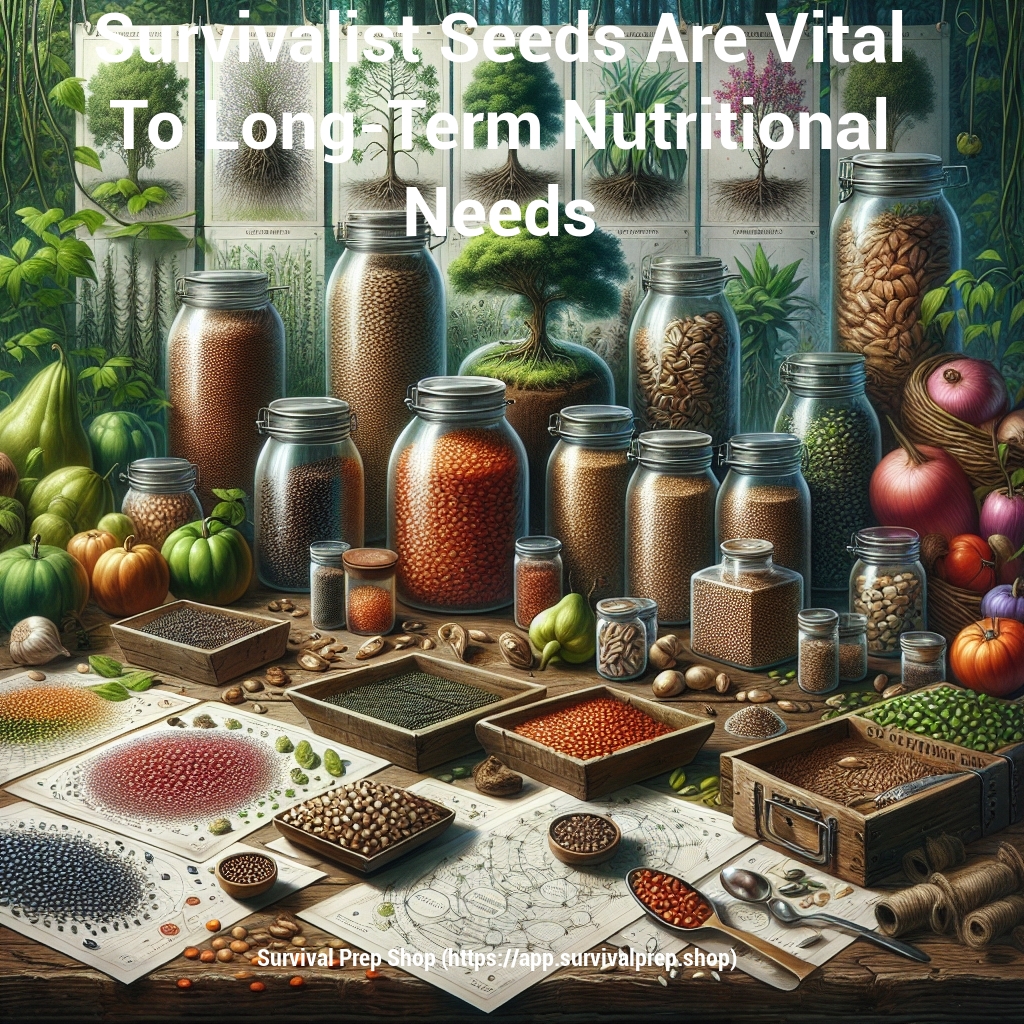
Hello everyone, and welcome to the Survival Prep Shop. I’m TK, and it’s great to have you with us as we delve into some essential survival wisdom. The perspectives I’m about to share are part of my own story, crafted through years of experience and learning. Today, we’re focusing on a crucial aspect of survival preparedness: seed storage and selection for sustainable food sources.
When there are no longer ways to purchase the foods needed for long-term survival, you will need an alternative solution. The best solution is to have seeds that can be harvested from the foods grown and replanted again. These kinds of seeds can continually provide for your family year after year.
Picking the type of seeds you’ll want can be done in one of two ways. You can individually choose the seeds you want or you can buy them in prepackaged containers. What you’ll want to look for are seeds that are clearly labeled as survival or heirloom seeds. The reason you want to be specific with this is because these are the seeds that are packaged in a way so that their viability is guaranteed. Whichever seed choice you make, be sure that you look for ones that say they’re hermetically stored.
The way they’re packaged will keep them safe no matter when you need to open the container. They also continue to produce food gardens. You want these continually producing seeds because when there is no access to grocery stores and the types of prepackaged foods we get now, if you plant seeds once and that’s it, you’ll be in trouble.
You can choose individually according to the types of seeds you get. You can buy vegetables in one group of seeds and fruits in another. You can also purchase what’s called medicinal seeds. These are seeds that will produce plants that are well known to treat certain ailments.
Some people, however, choose to create their own survivalist seed supply rather than buying them. If you choose to do this, you’ll have to follow a few rules. Don’t use wet seeds. The seeds must be completely dry before you store them. The storage containers you use are vitally important. You have to protect the seeds from the ability of growing fungus, from marauding insects and animals, and from heat.
For the best results, you’ll want to store your seeds in glass containers. You’ll want to maintain the right temperature for the seeds and remember that some seeds can handle a colder storage temperature while others can’t. Light and humidity will negatively impact a seed’s ability to produce a viable plant. You want to keep the seed’s temperature controlled below 50 degrees and remember that while some seeds can last in storage up to six years and still produce a crop, other seeds can’t. You’ll want to do a seed rotation to check and make sure that the seeds are still good before you need them.
That brings us to the end of today’s guide. If my experience can help you navigate the waters of uncertainty, then I’m happy to share. Thanks for reading, and keep forging your own trail. Thanks again. TK – Survival Prep Shop
— Don’t forget to check out our YouTube channel — Click here —
